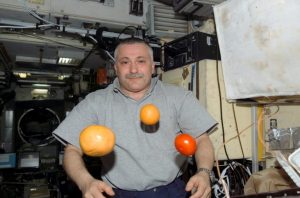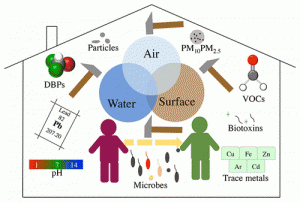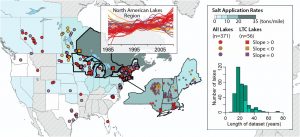Microbes in space have been of interest to the folks at various space agencies for as long as we’ve been sending people into space. Rampant mold growth on the Russian Space Station Mir was probably one of the reasons for the decision to “deorbit” the station (a fancy way of describing crashing into the ocean). …
Researchers at Virginia Tech’s Center for Science and Engineering of the Exposome (SEE) recently published a critical review in ES&T examining the “exposome of the built environment” and proposed engineering strategies for its control. The exposome is defined as our lifetime exposure to chemicals, microbes, and radiation and derives from anything we come into …
“Should we always antibiotics until the end of their course?” Well, this has been a question asked on and off over the last 10 years or so. And this I was quite interested in a Tweet I saw from Eric Topol this AM (I note – Eric Topol on Twitter is a better source of …
So this article doesn’t really relate to the built environment but is quite interesting nonetheless. I feel like people often say things like “an asteroid impact would kill all us humans but life would still go on”. The study, “The Resilience of Life to Astrophysical Events” is basically a bunch of math/physics trying to figure …
An interesting confluence of factors has come together in recent years, resulting in an explosion of “science games”. Some of these games use science as a theme, many are educational in nature, and some few even accomplish science through gaming. In my opinion these are the factors that have precipitated this change: Board/card/video games have …
The microbial interactions we share with built environments play a central role in shaping the microbiota of our surroundings and in the development of our own microbiome. Nowhere does this microbial flux have more profound implications for human health than in hospitals, where rooms are subject to a constant turnover in occupant, each leaving behind …
So there is a new paper out that is incredibly interesting and has been getting lots of press coverage. The paper was in Nature: Endothelial TLR4 and the microbiome drive cerebral cavernous malformations. Sadly it is behind a paywall, so not everyone out there will have free access to it. But it is available in sci-hub …
It seems to me that this is calling out for some large scale comparative microbial community study: Salt from icy roads is contaminating North America’s lakes – The Washington Post Basically, there is evidence that lakes throughout North America have seen a big increase in salt levels connected to salt used to try and deal …
Just a quick post here. There is a “special issue of International Journal of Environmental Research and Public Health (ISSN 1660-4601).” that may be of interest. The issue is on “Emerging Aquatic Microbial and Chemical Contaminants of Concern and Their Impact on Human Health” and it currently has seven papers and apparently more coming. A brief …
Just got this announcement via email and thought it might be of interest. New eBook Special Collection of JB Minreviews Dear Colleague, The microbial world is a competitive place, and bacteria have evolved diverse strategies to sense their environment and survive in it. These strategies involve acquiring necessary nutrients, particularly when inside a mammalian host, …







